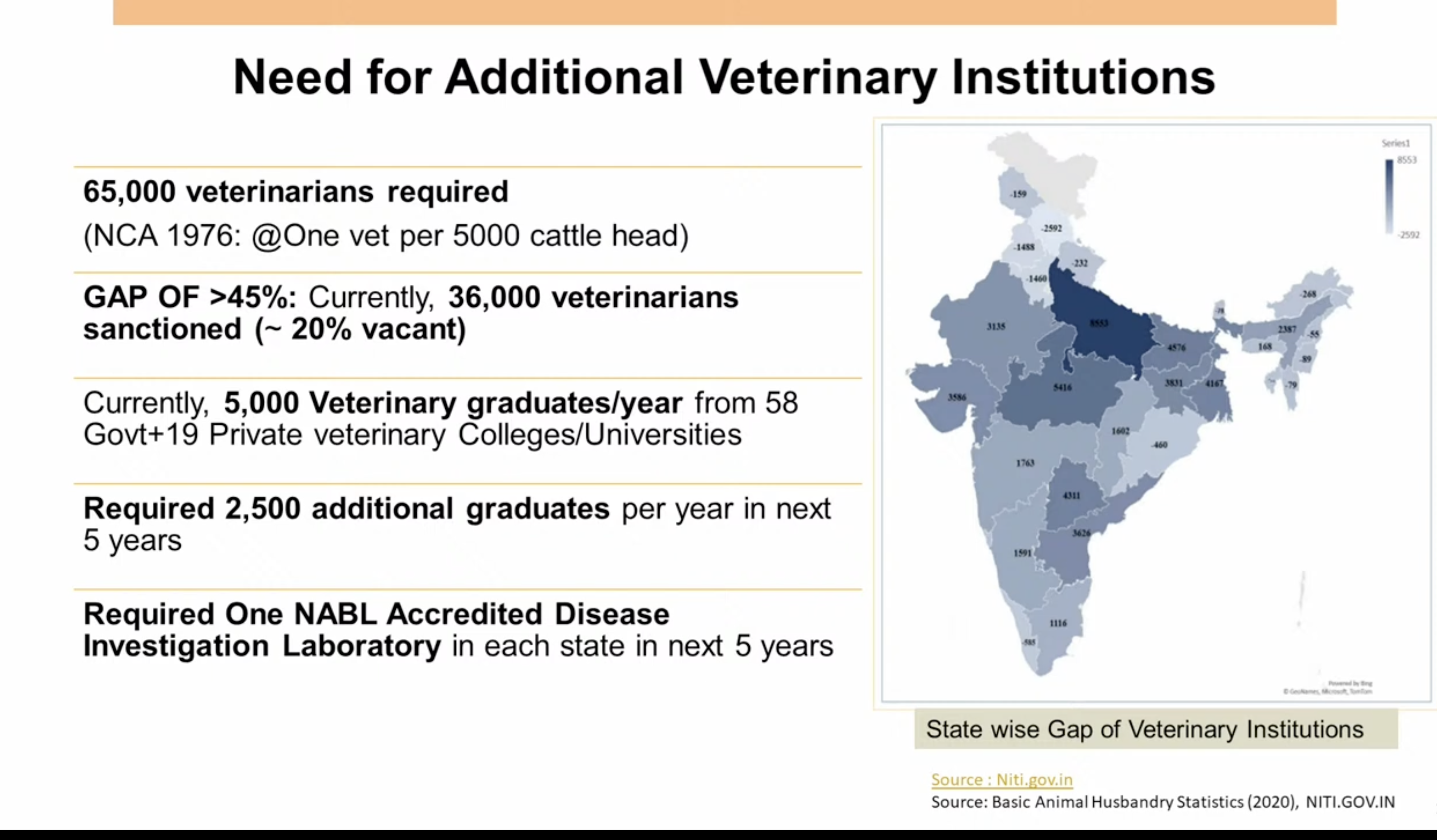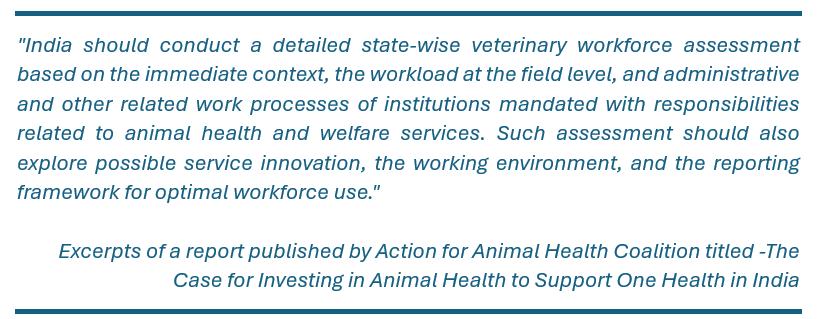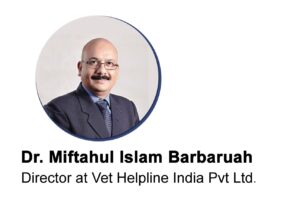As per the data indicated by the Secretary of the Department of Animal Husbandry and Dairying (DAHD), India needs 65000 Veterinarians and should produce 2500 additional veterinary graduates annually for the next five years to meet the target. The total number of annual veterinary graduate supply has already crossed 4300 marks in recent years. As per a report presented to parliament in December 2022, the actual strength of field Veterinarians in the public sector in India is 28,328 against an approved job position of 36,623.
Policymakers in India often refer to the National Commission of Agriculture-1976 report that recommended one veterinarian per 5000 cattle heads to quote the requirement of veterinarians. The reply of DAHD to parliament (Lok Sabha’s) question dated 2nd August 2022 (based on the number of registered veterinary practitioners as of 31/03/2020) mentioned a varying number of registered veterinarians against cattle units across the states.
The number of veterinary educational establishments, including institutions for training paraprofessionals in India’s public and private sectors, has shown fast growth in recent years, and many states are still planning to establish new colleges. There are reports of faculty shortages and colleges running with nominal infrastructures threatening education and training outcomes.
States in India should encourage the setting up of new veterinary educational institutions only after planning for optimum workforce availability. “The Case for Investing in Animal Health to Support One Health in India” – a recent report authored by Vet Helpline India Pvt Ltd and reviewed by Brooke India and Brooke UK for Action for Animal Health coalition recommended the following:
Click Here to Read the report of Action for Animal Health Coalition
Veterinary Education is a state subject in India, and Indian states can consider the following 5-point action plan to prepare for the veterinary workforce challenges. Statutory organizations like the Veterinary Council of India and respective State Veterinary Councils can lead in convincing central and State governments for resource mobilization to implement the suggested action plan.
- Initiate a significant exercise to understand better the categories of personnel serving the sector and to develop a designed real-time database of veterinary and related personnel (including students)
- Conduct a detailed institution-wise study to understand the job profiles, work process and workload vis a-vis personnel and possible innovations for efficient workforce use.
- Collect geo-location of various veterinary service-related institutions coinciding with the forthcoming livestock census primarily to understand service availability and accessibility vis-a-vis livestock numbers (Per the new census) in areas served by each institution.
- Conduct a competency mapping exercise for various categories of personnel vis a vis job profile and design a training plan including a learning management system with suitable contents.
- Conduct a detailed veterinary workforce planning to ensure the six A’s of Veterinary Service Delivery: Availability, Accessibility, Acceptability, Adequacy, Affordability and Accountability. Include a perspective / long-term plan to set up the required educational and training institutions within each State to meet the future supply needs of both government and private sector.
While implementing the above action plan, we should consider the aspirations of young veterinarians and the challenges of ensuring an environment that enables our veterinary workforce to perform optimally.
As one implements the above 5-point action plan, states with no veterinary educational establishment can adopt the following strategy to meet the immediate workforce supply need.
- Initiate a proposal involving a few leading government veterinary colleges and Veterinary Paraprofessional training institutions in India to create a fixed number of additional seats for diploma, undergraduates and postgraduate studies earmarked exclusively for candidates nominated by the state council/government.
- Work with the Veterinary Council of India and select colleges to assess the cost of diploma, graduate and postgraduate education, and negotiate with colleges for funding support from the state government to maintain the additional seats for nominated students.
- Initiate suitable rules through the Veterinary Council of India to permit nominated students (to be admitted to various colleges across India ) to attend the designed mandatory internship within the State under the joint supervision of the state Department of Animal Husbandry and Veterinary and the concerned college.
- Sign a Memorandum of Understanding with known public and private institutions for off-campus certified training to build the capacity of existing serving public and private veterinarians registered with the State Veterinary Council.
Contributed by:
Citation:
Barbaruah Miftahul, Ensuring optimum veterinary workforce in India, The Vet Helpline E-magazine, Category: Veterinary Profession, Workforce Development and Continuing Education, Vol XII (2024) ISSN 2454-9282






